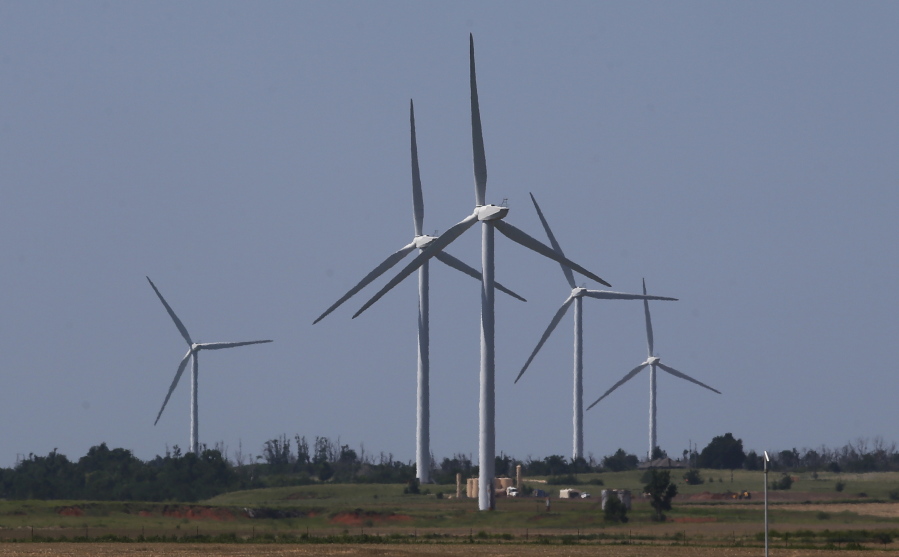OKLAHOMA CITY — As Oklahoma sought to diversify its oil-and-gas powered economy in the early 2000s, policymakers rolled out the red carpet for the burgeoning wind industry, offering generous state tax incentives and access to windy, inexpensive tracts of land.
The industry exploded from virtually nothing in 2002 to 7,495 megawatts of capacity last year, ranking it No. 2 nationally in installed wind capacity behind neighboring Texas to the south. More than 3,700 giant turbines now dot vast swathes of central and western Oklahoma’s rural landscape.
But as the state’s finances plunged into recession amid a downturn in the oil patch in recent years, lawmakers ended all the state incentives and now are considering a new production tax on wind and even capping previously guaranteed incentives. Anti-wind groups aired commercials featuring former Republican Gov. Frank Keating admitting the incentives were a mistake, and former Dallas Cowboys and University of Oklahoma football coach Barry Switzer decrying them as a “bad deal.”
Now a battle is shaping up at Oklahoma’s Capitol that includes fierce opposition to wind from some oil-and-gas leaders and critics, including one Republican lawmaker who accused someone connected to the industry of tracking his car and angrily shut down a wind industry news conference at the Statehouse last week.
“We’ve been struggling with our state budget for four or five years now. It’s been tough,” said state Rep. Mark McBride, who claims that a tracking device he found on his truck in December is connected to his opposition to the wind industry. “Where’s wind been? They’ve been fighting us every step of the way on trying to help out the state.”
Mark Yates, who heads the Oklahoma Wind Coalition, has denied that wind industry representatives are spying on McBride.
There’s no question Oklahoma’s tax incentives have become more costly at a time state coffers have dwindled. A five-year property tax exemption on wind farms skyrocketed from about $1 million in 2004 to more than $60 million in 2017. An even more generous cash subsidy for wind production ballooned to nearly $74 million in 2016, according to preliminary estimates from the Tax Commission.
But all of those incentives have ended in Oklahoma, even as neighboring Texas and Kansas continue to offer property tax exemptions to lure wind industry projects to their states.
“It frustrates me that expansion of these wind farms has slowed down,” said rancher Chuck Coffey, who receives lease payments from 35 turbines that dot his Double C Cattle Company ranch in Murray County, about 90 miles south of Oklahoma City. “We’re essentially going to drive the wind companies out of Oklahoma.”
Supporters of the wind industry in Oklahoma say much of the opposition is being fueled by the powerful oil and gas lobby, which has long been one of the most influential at the state Capitol. The industry managed to secure a deep tax cut for oil and gas production just before prices collapsed, but lawmakers haven’t yet had the political will to reverse it.
“I do think there are a select few in oil and gas that have driven the anti-wind rhetoric, no doubt, and over the past three years that has really taken hold with some of the legislators,” Yate said. “And it definitely has driven a wedge and created political volatility.”



